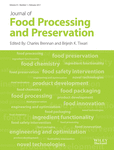Antioxidant and Antiproliferative Activity of Walnut Extract (Juglans regia L.) Processed by Different Methods and Identification of Compounds Using GC/MS and LC/MS Technique
Abstract
This work was primarily aimed to evaluate the effect of microwave and soaking of walnut (Juglans regia L.) on its antioxidant and antiproliferative activities. The bioactive compounds were also identified by using chromatographic techniques (GC–MS and LC–MS). The extraction of walnut was carried out in different solvents (acetone, methanol and water) and antioxidant activity of each extract was evaluated by different assays. The antiproliferative activity of the water extracted sample was tested on human colon cancer cells (colo-205) using MTT assay. The acetone extracted sample showed significantly higher antioxidant activity than methanol and water extracted sample. The major components found by GC/MS and LC/MS analysis were linoleic acid, oleic acid and hexadecanoic acid and epicatechin, quercetin, epicatechin 3-O-gallate and ellagic acid, respectively. At 100 µg/mL, the soaked, microwaved and unprocessed sample showed 77, 53.16 and 58.8% inhibition of cell proliferation, respectively. The antioxidant activity has also been increased after soaking of walnut.
Practical Applications
The article represents the antioxidant and anticancerous activities of walnut and identified various compounds using GC/MS and LCMS techniques. The processing techniques (microwaving and soaking) significantly affected the studied parameters. The work suggests the utilization of microwave and soaking processing at industrial level. It was observed that soaking process can increase the health promoting benefits of walnuts.




